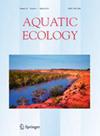Succession of bacterial community during microbially driven cyanobacterial organic matter degradation and its relationship to water quality in Taihu Lake, China
Abstract
Anthropogenic eutrophication continuously degrades aquatic ecosystems and has led to a high frequency of massive cyanobacterial blooms in Taihu Lake since 1980. After bloom-forming cyanobacteria begin to disappear, substantial cyanobacterial scum accumulates and is degraded by microorganisms along the lakeshore. Several studies have revealed that cyanobacterial decomposition alters bacterial composition. However, the differences in responses among free-living and particle-attached bacteria to lake microbial community succession and the transition mechanism from one life strategy to another during cyanobacterial biomass and cyanobacteria-derived dissolved organic matter degradation remain unclear. This study investigated the microbial dynamics of cyanobacterial organic matter degradation over 61 days and revealed that complex interactions between particle-attached bacteria and cyanobacterial organic matter resulted in stage-specific changes in the chemical properties of water and a significant succession of the particle-attached bacterial community structure. As cyanobacteria biomass decayed, partial particle-attached bacteria transitioned into free-living bacteria. Successive free-living and particle-attached bacterial communities play important roles in driving dynamic variations in the chemical properties of water. This study provides new insights into the ecological processes and mechanisms governing the shift in bacterial community assembly between free-living and particle-attached bacteria during the post-bloom period in the Lake Taihu watershed.

 求助内容:
求助内容: 应助结果提醒方式:
应助结果提醒方式:


